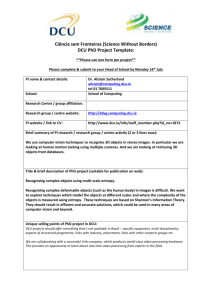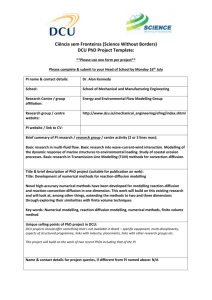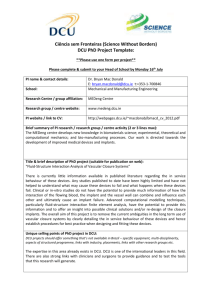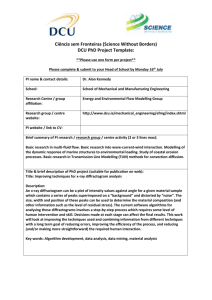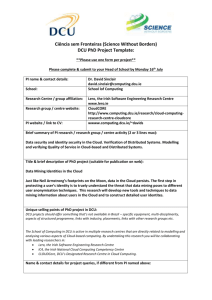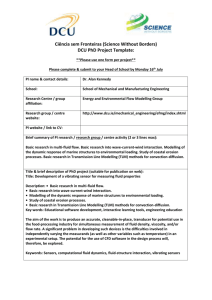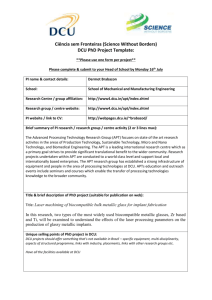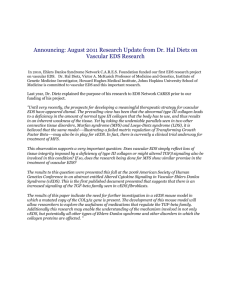Remodelling in a tissue engineered vascular scaffold
advertisement
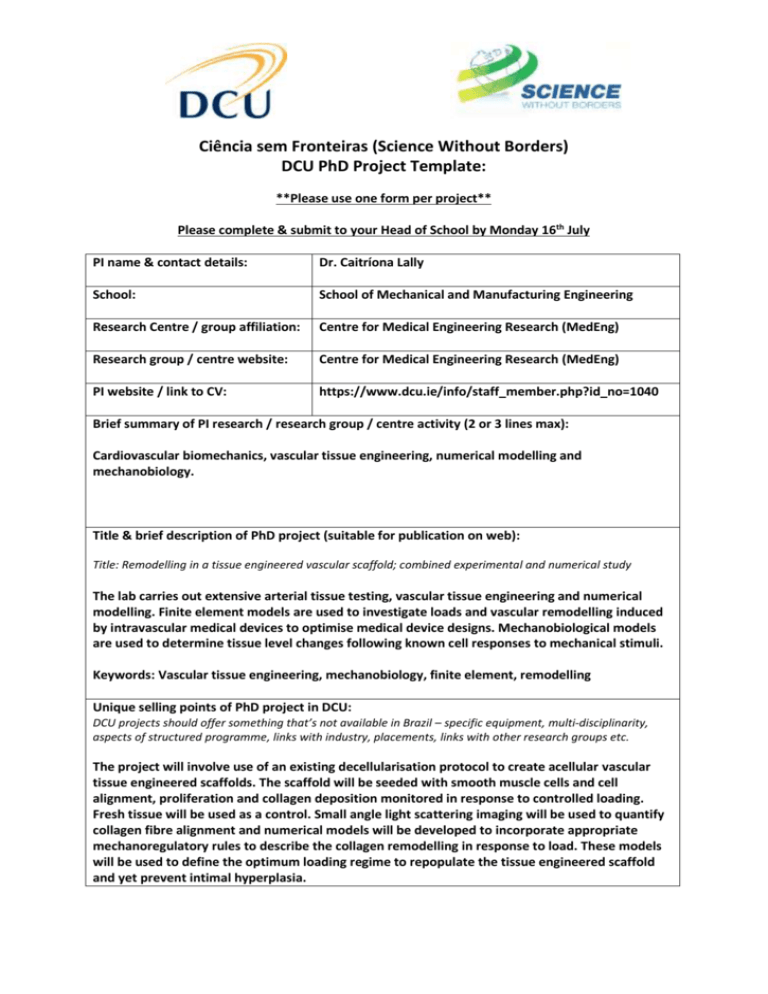
Ciência sem Fronteiras (Science Without Borders) DCU PhD Project Template: **Please use one form per project** Please complete & submit to your Head of School by Monday 16th July PI name & contact details: Dr. Caitríona Lally School: School of Mechanical and Manufacturing Engineering Research Centre / group affiliation: Centre for Medical Engineering Research (MedEng) Research group / centre website: Centre for Medical Engineering Research (MedEng) PI website / link to CV: https://www.dcu.ie/info/staff_member.php?id_no=1040 Brief summary of PI research / research group / centre activity (2 or 3 lines max): Cardiovascular biomechanics, vascular tissue engineering, numerical modelling and mechanobiology. Title & brief description of PhD project (suitable for publication on web): Title: Remodelling in a tissue engineered vascular scaffold; combined experimental and numerical study The lab carries out extensive arterial tissue testing, vascular tissue engineering and numerical modelling. Finite element models are used to investigate loads and vascular remodelling induced by intravascular medical devices to optimise medical device designs. Mechanobiological models are used to determine tissue level changes following known cell responses to mechanical stimuli. Keywords: Vascular tissue engineering, mechanobiology, finite element, remodelling Unique selling points of PhD project in DCU: DCU projects should offer something that’s not available in Brazil – specific equipment, multi-disciplinarity, aspects of structured programme, links with industry, placements, links with other research groups etc. The project will involve use of an existing decellularisation protocol to create acellular vascular tissue engineered scaffolds. The scaffold will be seeded with smooth muscle cells and cell alignment, proliferation and collagen deposition monitored in response to controlled loading. Fresh tissue will be used as a control. Small angle light scattering imaging will be used to quantify collagen fibre alignment and numerical models will be developed to incorporate appropriate mechanoregulatory rules to describe the collagen remodelling in response to load. These models will be used to define the optimum loading regime to repopulate the tissue engineered scaffold and yet prevent intimal hyperplasia. Name & contact details for project queries, if different from PI named above: N/A Please indicate the graduates of which disciplines that should apply: Engineering and other technical areas Ciência sem Fronteiras / Science Without Borders Priority Area: Please indicate the specific programme priority area under which the proposed PhD project fits- choose only one (tick box): Engineering and other technological areas X Pure and Natural Sciences (e.g. mathematics, physics, chemistry) Health and Biomedical Sciences Information and Communication Technologies (ICTs) Aerospace Pharmaceuticals Oil, Gas and Coal Renewable Energy Minerals Biotechnology Nanotechnology and New Materials Technology of prevention and remediation of natural disasters Biodiversity and Bioprospection Marine Sciences Creative Industry New technologies in constructive engineering Please complete

